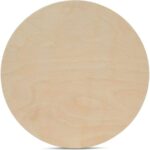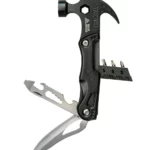I. Introduction to Molding Techniques for Replacing Rare Parts
II. Benefits of Using Molding Techniques for Old Appliances
III. Step-by-Step Guide for Molding Rare Parts
IV. Tips for Successfully Using Molding Techniques
Welcome to the world of molding techniques for replacing rare parts! Have you ever found yourself in a situation where you have an old appliance or gadget that you love, but a crucial part has broken or gone missing? It can be frustrating and disheartening to think that you might have to give up on your beloved item just because a small component is no longer available. But fear not! Molding techniques can come to the rescue and help you recreate those rare parts with ease.
What are Molding Techniques?
Molding techniques involve creating a mold of an existing part and then using that mold to replicate the part in a new material. This process allows you to make exact replicas of rare or hard-to-find parts, ensuring that your appliance or gadget can be restored to its former glory.
There are various types of molding techniques available for different purposes, such as injection molding, compression molding, and rotational molding. Each method has its own unique advantages and is suitable for specific types of parts and materials.
When it comes to replacing rare parts, molding techniques can be a lifesaver. Instead of scouring the internet for hours in search of that one elusive component, you can simply create a mold of the part you need and produce as many copies as you like. This not only saves you time and money but also gives you the satisfaction of being able to fix your item yourself.
Whether you have a vintage radio, a classic car, or a cherished family heirloom, molding techniques can help you keep these treasures in working condition for years to come. Don’t let a missing part stand in the way of your enjoyment – embrace the power of molding and bring your old items back to life!
Benefits of Using Molding Techniques for Old Appliances
So, you have this old appliance that you absolutely love, but unfortunately, one of its parts is no longer available. What do you do? Well, fear not, because molding techniques might just be the solution you’ve been looking for!
Using molding techniques to replace rare parts for your old appliances can bring a host of benefits:
- Cost-Effective: One of the biggest advantages of using molding techniques is that it can be a cost-effective solution. Instead of having to hunt down a rare part or purchase a new appliance altogether, you can simply create a replica with molding techniques.
- Eco-Friendly: By using molding techniques to replace rare parts, you are also being environmentally friendly. You are extending the life of your appliance and reducing the amount of waste that goes into landfills.
- Customization: Molding techniques allow you to customize the replacement part to fit your specific needs. You can choose the material, color, and design that best suits your appliance.
- Preservation: If you have a sentimental attachment to your old appliance, using molding techniques to replace rare parts can help preserve its legacy. You can continue using it for years to come, maintaining its sentimental value.
- Convenience: Instead of spending hours searching for a rare part or dealing with the hassle of purchasing a new appliance, molding techniques offer a convenient solution. You can create the replacement part right in the comfort of your own home.
So, if you find yourself in a situation where a rare part for your old appliance is no longer available, consider using molding techniques to create a replacement. Not only will you save money and reduce waste, but you’ll also have the satisfaction of knowing that you were able to revive your beloved appliance with your own hands.
Step-by-Step Guide for Molding Rare Parts
So, you’ve got a rare part that needs replacing for your old appliance, and you’re considering using molding techniques to create a new one. Great choice! Molding can be a cost-effective and efficient way to replicate hard-to-find parts without breaking the bank. Follow this step-by-step guide to successfully mold rare parts for your appliances.
1. Gather Your Materials
First things first, gather all the materials you’ll need for the molding process. This includes molding compound, a mixing container, a stirring stick, and of course, the part you want to replicate. Make sure to read the instructions on the molding compound carefully to ensure you’re using it correctly.
2. Prepare the Part
Clean the part you want to replicate thoroughly to remove any dirt, dust, or debris. This will ensure that the mold captures all the details accurately. You may also need to apply a release agent to the part to prevent the molding compound from sticking to it.
3. Mix the Molding Compound
Follow the instructions provided with the molding compound to mix it correctly. Make sure to mix it thoroughly to avoid any air bubbles in the mold. Pour the mixed compound into the mold box, ensuring that the part is fully covered.
4. Let it Set
Allow the molding compound to set and cure according to the instructions. This can take anywhere from a few hours to a day, depending on the type of compound you’re using. Be patient and resist the urge to check on it too soon!
5. Remove the Mold
Once the compound has fully set, carefully remove the mold from the mold box. Take your time to ensure that the mold is intact and that all the details of the part have been captured accurately. If necessary, trim any excess material from the edges of the mold.
6. Create the New Part
Now comes the exciting part – using the mold to create a new part! Depending on the material you’re using, you can pour resin, plastic, or metal into the mold to replicate the original part. Follow the instructions for your chosen material carefully to ensure a successful outcome.
7. Finishing Touches
Once the new part has been cast and removed from the mold, you may need to do some finishing touches to match it to the original part. This can include sanding, painting, or any other necessary steps to make sure the new part fits and functions correctly.
By following these steps and paying attention to detail, you can successfully mold rare parts for your old appliances and keep them running smoothly for years to come. Happy molding!
Tips for Successfully Using Molding Techniques
So, you’ve decided to try your hand at molding rare parts for your old appliances. Congratulations! This can be a rewarding and cost-effective way to bring new life to your beloved machines. However, before you dive into this DIY project, here are some tips to help you achieve the best results:
- Choose the Right Materials: The success of your molding project depends heavily on the materials you use. Make sure to select high-quality silicone mold and casting materials that are suitable for the type of part you are replicating. Investing in good materials will ensure a more precise and durable mold.
- Prepare Your Workspace: Before you begin, set up a clean and organized workspace. Ensure that you have all the necessary tools and materials within reach. A clutter-free environment will make the molding process smoother and more efficient.
- Follow Instructions Carefully: When working with molding materials, it’s crucial to follow the manufacturer’s instructions to the letter. Mixing ratios, curing times, and application techniques can all affect the quality of your mold. Take the time to read and understand the instructions before you start.
- Practice Patience: Molding can be a time-consuming process, so be prepared to exercise patience. Rushing through the steps can lead to mistakes and imperfect results. Take your time, follow each step carefully, and allow the materials to cure properly before moving on to the next stage.
- Use Release Agents: To ensure that your mold releases easily from the original part, apply a release agent before pouring the mold material. This will prevent the mold from sticking and help you remove the replica without any damage.
- Test Before Casting: Before pouring the casting material into your mold, it’s a good idea to do a test run with a small amount of material. This will help you identify any issues or flaws in the mold before committing to the full casting. It’s better to catch any problems early on than to waste materials and time.
- Experiment and Learn: Molding is a skill that improves with practice. Don’t be discouraged if your first few attempts don’t turn out perfectly. Take note of what worked well and what didn’t, and use this knowledge to refine your technique for future projects. The more you practice, the better you’ll become at molding rare parts.
By following these tips and approaching your molding project with care and patience, you can successfully replicate rare parts for your old appliances with ease. Remember, practice makes perfect, so don’t be afraid to experiment and learn from your experiences. Happy molding!










Comments